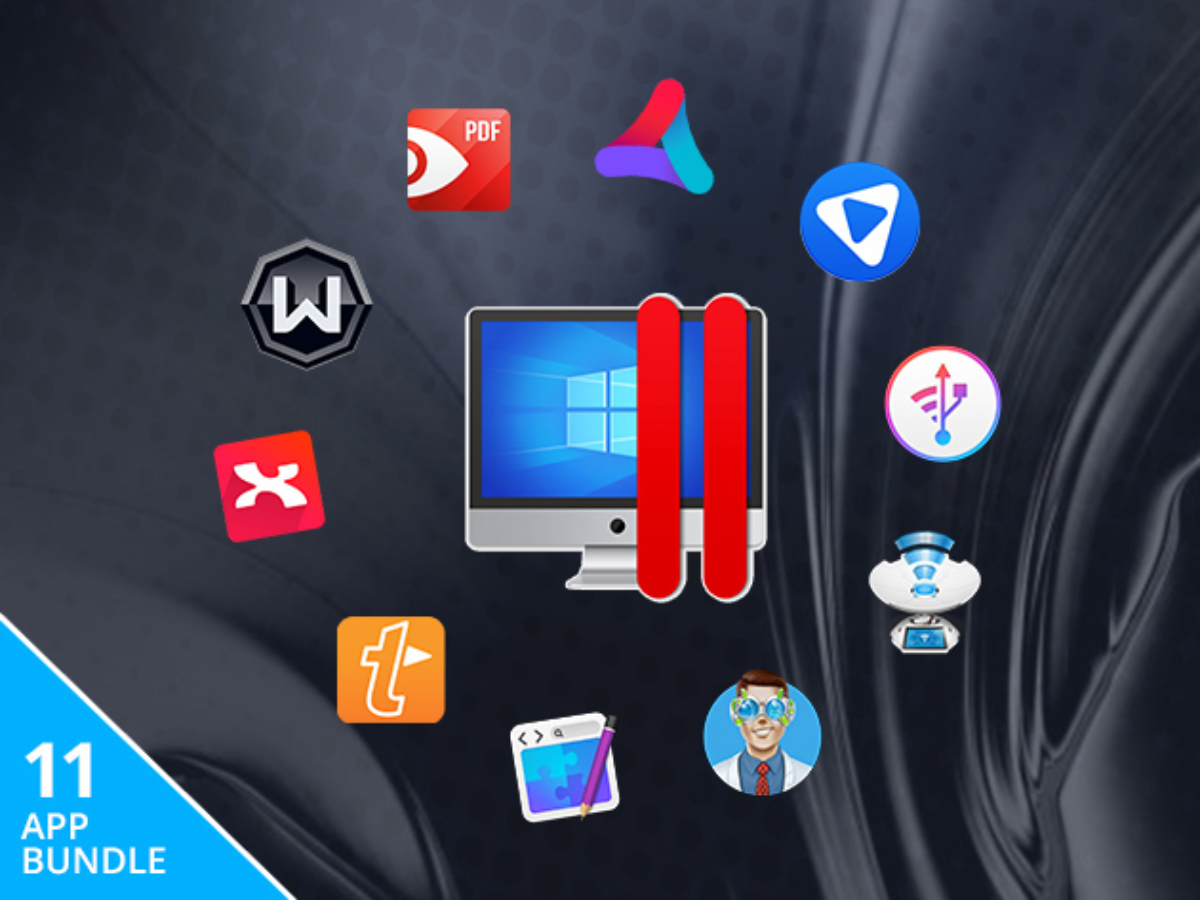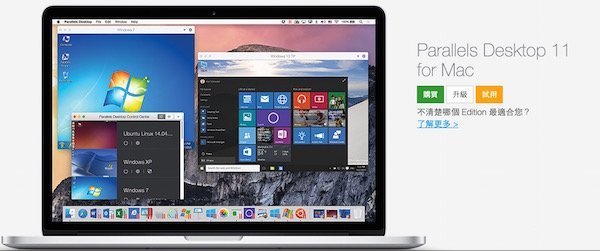Parallels Get The Wifi To Work Drivers For The ASCOM is installed and the drivers for the mount are installed. Sometimes the port is empty and wont populate and sometimes its there fine but either way I get no success most of the time, but weirdly sometimes it works. Even though the imac works through wireless with no problem, there is no wireless adapter mentioned in Windows Device Manager. THe Parallels is from a disk installation. It's Parallels Desktop 5. If your Mac connects to the Internet via Wi-Fi, check the Wi-Fi menu (at the top right of your screen) to make sure you’re connected to the network you intend to be. Make sure to choose Wi-Fi in the Interface dropdown menu. The Mac not connecting to WiFi issue should now be resolved and you will be able to connect to WiFi successfully. Use Wireless Diagnostics. The built-in Wireless Diagnostics tool on your Mac helps you figure out the wrong configuration of your WiFi network.
Guest blog by RamaKrishna Sarma Chavali, Parallels Support Team
How does your virtual machine connect to the Internet in Parallels Desktop? This is a question I hear pretty often from users, so let me shed some light on this.
Parallels Desktop has three different networking modes to “talk to the world”. These are Bridged, Shared and Host-Only. Let’s take a look at how they work and what we can do with these three network modes.
Share Network Settings Between Mac OS X and Windows (Shared Mode):
When you set up a new VM, one of the basic network modes to choose from will be Shared mode. It’s applied by default, unless you change it to something different. In this networking mode, we use the Mac network to connect to the external network. It’s the easiest to use because your VM can use any type of network connection available on the Mac to connect to Internet, so it’s useful when you have a limited supply of IP addresses on your network.
This is the recommended type of networking for the VMs. When this networking mode is used your Mac will work as a router for your VM. As a result:
- Parallels Desktop creates a separate virtual subnet with its own virtual DHCP server running in OS X.
- A VM belongs to that virtual subnet with its own IP range.
- A VM is not visible in the real subnet the Mac belongs to.
- A VM can ping computers in the real subnet.
Apply Separate Network Settings to your VM (Bridged Mode):
When this networking mode is used, your VM’s network card establishes a direct connection with your Mac network card using a technology called “bridging.”
Mac Won't Connect To Wifi Network
Your VM will have its own identity on your network. Generally, your VM acquires an IP address and other network details automatically from your network DHCP serverto access the local network and Internet through one of the network adapters installed on the host computer.

The VM acts as a standalone computer in the network and should be configured in the same way as a real one.
If you use a bridged network:
- A VM appears as a separate physical computer that belongs to the same subnet as the Mac it’s running on.
- A DHCP server (e.g. your router) provides a VM with an IP address within the same IP range as other computers in the same subnet.
- A VM can ping and see all computers in the subnet.
- Other computers can ping and see the VM.
You can change the VM configuration at any time. To choose the appropriate network mode, go to → Action menu → Configure → Hardware tab → Network.
Use Host-Only Network Settings (Host-Only Mode):
The Host-Only network is a closed network that is accessible only to Mac OS X and Windows. Select this option to allow the VM to connect to the host computer and the VMs residing on it and to make it invisible outside of the host computer. Mac OS X is connected to this network via the Parallels Host-Only Networking adapter automatically created on your Mac during the Parallels Desktop installation. The addresses for Windows are provided by the Parallels DHCP server.
Believe it or not, it’s easy to configure your network according to what your needs are. Hopefully this extra information on networking in Parallels Desktop was useful, and don’t forget to follow the Support Team on Twitter!
Try Parallels Desktop for free for 14 days!
Question or issue on macOS:
I’m running a Windows 7 VM via Parallels on OSX. There’s an instance of SQL Server running on that VM. I would very much like to be able to connect to that instance from my host (OSX). I want to be able to leverage my local RoR environment with SQLServer as a backend.
I can’t get the VM to respond to any requests from my Mac and I haven’t a clue where to begin the troubleshooting process.
Cannot Connect To Wifi Mac
Can anyone provide any insights or helpful resources?
TIA!
How to solve this problem?


Solution no. 1:
Bobby, if you want to connect from your mac osx to a sql server installed on a parallels vm you need to do 3 things:
1) Enable remote connections on your sql server.
Microsoft SQL Server 2005 -> Configuration Tools -> SQL Server Surface Area Configuration -> Surface Area Configuration for Services and Connections -> Database Engine -> Remote Connections -> Local and remote connections -> Enable TCP/IP -> Apply
2) Turn on the SQL Server Browser service (sql server express and dev edition turn this off by default)
Microsoft SQL Server 2005 -> Configuration Tools -> SQL Server Configuration Manager -> Start SQL Server Browser service
3) Configure the firewall to allow network traffic
You can configure it per program or I just opened a port in firewall exceptions (1433 by default for SQL Server 2005)
For instance my jTDS connection string looks like that:

(where the host is your vm’s ip of course)
Solution no. 2:
Parallels For Mac Connect To Wifi Setup
Posting a new answer since I cannot comment, yet.
For me, in addition to the helpful advice from Pavel and Ed that is all required, I had to setup an additional adapter in Parallels on the Windows VM as a Host-only adapter. Then, I assigned that adapter a static IP in the VM and used that IP in my connection string.
More details are available here which helped me get my configuration working.
This is the most relevant section:
Parallels For Mac Connect To Wifi Password
First, define another network adapter in Parallels. This network adapter will have a static IP and will only allow connections from the host, that is OS X. Parallels cannot be running for this part.
Choose Configure… in the Virtual Machine menu of Parallels
Choose the Hardware tab
Add a new network adapter to the list on the left
Choose Host-Only Networking from the Type dropdown and be sure Connected is checked
Make a note of the MAC Address
Press OK
Next, we need to set a static IP for the new network adapter.
Start Parallels and, in my case, Windows XP (other versions of Windows should be similar)
Go to Network Connections in the Control Panel
The new LAN connection will be in the list, if you are unsure as to which one is the new one (it should have the highest number) you can compare the MAC address by checking the status
Bring up the properties panel for the correct LAN connection and go to the Internet Protocol (TCP/IP) properties
Enter a static IP of 10.37.129.10 (which is in a range that Parallels reserves for Host-Only Networking) and set the subnet mask to 255.255.255.0. Leave the gateway blank.
Save the changes by pressing OK
Parallels For Mac Connect To Wifi Extender
Solution no. 3:
You need to make sure remote connections are enabled in SQL server and open the relevant ports on the Windows firewall.
All the relevant steps are listed in this MSDN page (documentation for “Quadrant”, but relvant to any installation).